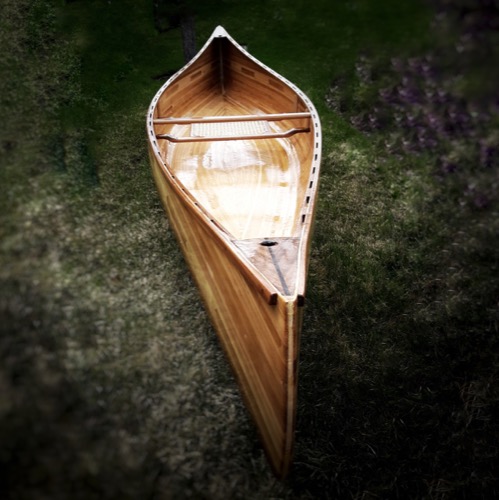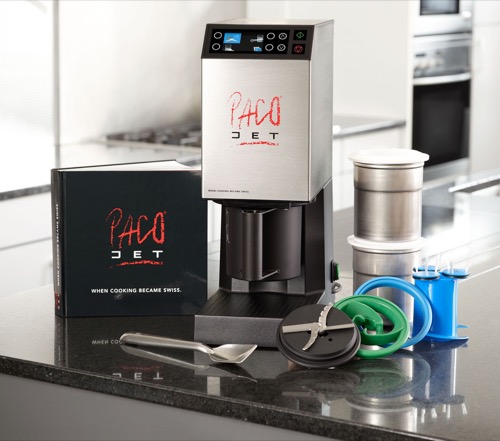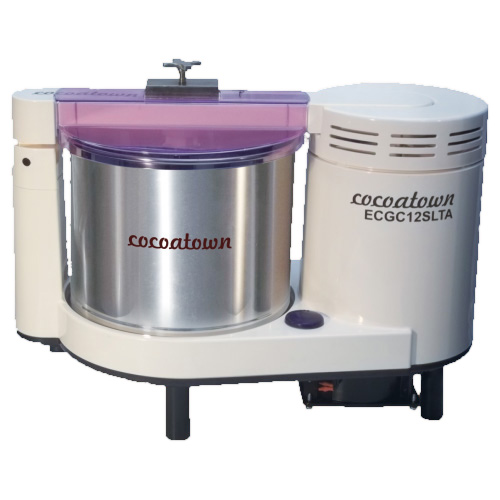Seth Godin, Bestselling Author

Cool Tools Show 196: Seth Godin
Our guest this week is Seth Godin. Seth is a 19-time bestselling author, a blogger, an internet pioneer and a teacher. You can find out more at seths.blog.
Subscribe to the Cool Tools Show on iTunes | RSS | Transcript | Download MP3 | See all the Cool Tools Show posts on a single page
Show notes:

LaserBond 100: All-Purpose Metal Marking Material
So, the Glowforge laser cutter was a sensation on Kickstarter, and unlike many Kickstarter sensations, it actually works. It’s a device that goes back and forth like a CAD cam flatbed printer, except it’s got a high powered laser in it that can cut through wood or acrylic or maybe chocolate. I haven’t tried chocolate. And I have been bad at it for a long time, and I’m getting better. They put up a sign in my building in the lobby, and I don’t like the sign. So I made a new one. I ended up making 18 versions to get it to look professional. And the key, which is talked about a little bit on the very active Glowforge discussion board is this new product called Laser Bond 100, and it’s this weird hack, which is this: Laser cutters of this sort can’t cut through metal, but they can heat it up. So, if you spray a certain kind of lubricant on the metal, when it heats up, it becomes impervious to everything, and then you just wash off all the other bits. And it’s a super weird way to make a sign, but it works beautifully.

Ashes Still Water Boats Canoe Plans
I’m imagining that I’m going to build a boat in my garage. Imagining is way better than actually doing it. So here’s the quick background: In 1955, there were more canoes in Canada than automobiles. It was the number one form of transportation for the whole country. And the canoes were mostly cedar strip canoes. A cedar strip canoe is made from very thin strips of cedar on top of wooden ribs, just like the ribs in a human being’s lungs that hold your lungs together. And then you can either put fiberglass or even more elegantly canvas on this boat. And the company that made most of them was the Chestnut Canoe Company. And I know this because I learned how to style a canoe from the student of the person who invented the sport in the 1930s. I once paddled with him, and I’ve taught thousands of people in Canada how to canoe. But even though I make my own canoe paddles, I’ve never made my own canoe. Well, the Chestnut Canoe Company, the pioneer, long out of business, and I’ve always been fascinated by how you just take basically 40 pounds of cedar strip scraps and make it into a boat. Well, there’s this guy, who has built a website where he sells you a tube with plans in it. That’s all you get is a printout. And what I love about it is it’s as if he has the ethos of a $50,000 motorcycle manufacturer. It’s got a style to it. It’s not just here’s the minimum, it’s here’s the maximum, here’s the Rococo Baroque version of a set of plans to make this timeless boat. And it is entirely possible I will never make the boat because I got almost 106% of the satisfaction just by knowing that I could.
Seth’s Zoom & Skype Call Tips
One of the biggest shifts of the last five years is that more and more people are realizing you don’t need to get on an airplane. You can just do a video call. And just before this, I was on a video call with 60 people, but you can do a video call with two people. And if you flew across the country and showed up at a meeting looking like you had just eaten pizza and then slept in it, people would laugh at you. But people show up like that in Zoom calls all the time. And so I wrote a blog post called How to Be on a Zoom Call. And basically what I describe is where to put the light, where to put the microphone, what to wear, don’t have a conversation in the middle because, unlike a conference call, which you can put on mute, it’s really hard to put a video call on mute talking to other people because everyone can see you. And so, if I’ve added sanity to anyone’s life with these six or eight points, I hope that it was worth the free click.
Paul McGowan’s speaker journey
There’s a guy named Paul in Boulder, Colorado, and he makes all the little pieces or some big pieces for expensive stereos, like pre-amps and amps and power conditioners and stuff like that. And what I like about this story is it’s a maker’s story because he has succeeded at doing it. But he made a friendship years ago with a guy named Arnie Nudell, and Arnie built the biggest speaker that was for sale in the history of the country, four boxes, each one bigger than a casket. So, if you bring these four boxes home, you’re going to need a casket because your spouse is going to kick you out. But leaving that aside, most people believe that Arnie’s speakers were some of the greatest ever made. Well, Paul hooked up with Arnie toward the end of his life, and they started talking about what would it be like to use modern technology to make that again. And unfortunately, Arnie died about nine months ago, and in his memory, Paul is persisting in making this speaker. What’s really cool about it is for a year he’s been sharing everything he’s been doing, talking about it. Halfway through, they abandoned the plans and started over in a different direction, and he’s doing it in front of all of his customers, and he hasn’t taken any orders. It’s not a Kickstarter ploy. It’s just a guy who likes being a maker. And I’ve been thrilled to watch it. He just demoed the prototype two weeks ago, and you can see some of the posts that he’s put up as it’s unfolded, and it takes real guts, I think, to be this sort of maker.

Pacojet for ice cream
There’s a machine in Switzerland that you can get called a Pacojet, and they use it in restaurants. You probably have never seen one. It’s a little bigger than a sewing machine. And in it is a blade that spins in a vacuum at about 10,000 RPM, which is wicked fast. And it comes with a half a dozen metal aluminum canisters that you fill with a homemade ice cream mix. In my case, I make a vegan one with four kinds of nuts, dates, and cocoa powder, and you freeze it to four degrees below zero. Then you put the canister into the Pacojet and tell it how many servings of ice cream you want, and you press a button, and it spins down at super high speed and spins off as many servings as your restaurant needs. And it is the best ice cream technology in the world. It’s using a totally different way to break up ice crystals to make deliciousness. And if you care a lot, a lot, a lot, a lot about homemade ice cream, this is the thing to get.

LEVOIT Air Purifier
This thing is such a breakthrough. In my office, I make lunch for everyone every day, and dosas are big on the mango, and dosas make a little bit of smoke. And this was a problem. It turns out this machine — you put it next to your stove, and you press a button, and all the smoke disappears. It’s got a carbon-something filter inside that is good for many, many hours. But I only use it for five minutes at a time, so I haven’t used it up. I have one next to my Glowforge. I have one next to my stove.

Copper Grill Mats for Dosas
Dosas are made from two ingredients, rice and lentils. So if you’re a vegan or vegetarian, it’s a home run. They’re delicious. You make them on a big cast iron skillet with no sides. But it turns out that the super popular brand new copper mats that are a miracle for cooking fish on the grill, you can also just dump the dosa batter right onto the copper mat, and you can grill your dosa. I got some copper mats for Dan Pink. I’m now a hero in his home. These copper mats cost a dollar each on Amazon. It is the size of a small cooking sheet. They’re flexible, and they’re just woven copper. And what you do is you put them on the grill, you warm them up for just a minute, and then nothing you put on them will stick. You can cook fish, anything. And it’s a miracle. Why did they just get invented now? If this was on late night TV, you would say, “That’s impossible.”

Dosa batter wet grinder
If you want to make the batter for dosa, you first have to move to South India, and then you get the two ingredients, and they have to each be soaked separately. And then you have to grind them in with all the wet grinder, which are a granite flat surface that’s round, and then these conical granite pyramids that spin around and grind things to a very small size. The reason you have to move to South India is, after you’ve made the batter, you have to plunge your hands into it repeatedly. That is how you inoculate it with whichever sort of bacteria makes it ferment. Now, I did not make my batter in South India, so my inoculation isn’t quite as successful, but you can’t skip the part about infecting it with the bacteria. But leaving that aside, a wet grinder is a miracle. You can make hummus in it. You can make chocolate from scratch, from cocoa nibs, and you can make this product. And there are lots of people who are importing them from India. The interesting thing about the Cocoa Town link is the guy who imports it from India realized it was the cheapest way to make homemade chocolate. So he just put a sticker on the outside, calls it Cocoa Town, and he doesn’t even mention dosa. You just have to pay extra because you can make chocolate in it.
Also mentioned:
Akimbo
My day job, the thing I’m spending all my time on now, is learning, not education. No certificate, no degree, no accreditation, no tests. Show up because you want to learn something. And it’s in the spirit of what I learned from Kevin all the way back to Whole Earth, which is that, if you’re enrolled in learning something, it doesn’t need to be sugarcoated the same way, and you are open to experience, which makes you open to change. So at akimbo.com, that is what we are building: one series of workshops after another where people work with each other, face to face on video or in discourse, around small lessons, over months of time, where at the end, they are transformed in the way they see the world, and they don’t care that they didn’t get a certificate.
We have hired professional editors to help create our weekly podcasts and video reviews. So far, Cool Tools listeners have pledged $390 a month. Please consider supporting us on Patreon. We have great rewards for people who contribute! If you would like to make a one-time donation, you can do so using this link: https://paypal.me/cooltools.– MF
10/18/19





